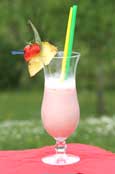Cardio Controversy
Some research suggests that if you exercise first thing in the morning, on an empty stomach, it may encourage your body to burn a greater proportion of fat as fuel.
The theory goes that your glycogen stores are depleted from fasting during the night. If you get up, don’t eat anything and immediately start exercising, your body then has to burn more fat as a source of energy.
Fat Chance!
Before you jump out of bed at 5am and head directly out for a run, there are few reasons why this isn’t necessarily a good plan.
Firstly, by skipping breakfast and going straight into your workout, you’re likely to tire sooner than if you’d munched on a banana first.
Flagging energy levels may result in a shorter or less intensive session and you ultimately burn fewer calories. It can also have a ruinous effect on any type of endurance training.
On top of that, you could end up being so hungry following your workout that you scoff more calories than you would do normally!
Let Not the Sands of Time Spoil Your Breakfast!
Admittedly not everyone can stomach food first thing in the morning and then go straight into a workout. A smoothie or piece of fruit with water might be a wise option. It’s really what works for you.
What I’m trying to get across is that the timing of your cardio workout is not an important factor in fat loss. The key is to burn more calories than you consume overall. Do this by exercising as much as possible and follow a healthy balanced diet.
My ideal is to get up early, eat a banana wrapped up in a piece of bread, and wash it down with a glass of water. Then get dressed and head out for a run. It gets the workout done plus you glow with that feel-good factor and a smug sensation all day!


